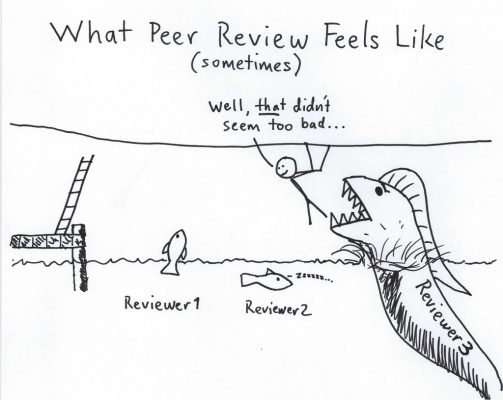
Have you ever wanted a reviewer who really tells it how it is? You should consider submitting a paper to the truly special publication ‘Frontiers for young minds’.
Frontiers for young minds is a journal for students between ages 8 and 15 that are curious and passionate about science. However, what’s truly special about this journal is that it is also reviewed by students of the same age, assisted by a science mentor. The journal aims to communicate cutting edge science to young readers in a way that they find both understandable and interesting. Therefore, kids and teenage “young reviewers” are called upon to make sure that complex terms are explained or weeded out, basics are introduced at the beginning, and also that the article is an exciting read.
In going through this process, the young reviewers are supposed to learn about science and the process of peer review, while the scientists who wrote the article receive feedback about their science communication skills and how much their science appeals to an open-minded lay public. At the same time, the journal is building up a collection of texts that can be used by science teachers and interested lay persons – and that are hopefully more exciting and up-to-date than many schoolbooks can ever aim to be. Many reviews are actually performed by school classes who work on it together as a project.
The first articles were published in 2014; the journal is open-access and financially supported by the Jacobs foundation. This enables the journal to make submissions free for authors. Articles are subdivided into thematic groups. “Core concept” articles lay the foundation for young readers to understand the more current contributions, or “new discoveries”, based on recently published papers.
The journal for kids is the junior branch of a “grown up” series of open access journals called Frontiers. Frontiers is itself a young publication series, having started out in 2007. While several frontiers journals such as Frontiers in Neuroscience are widely known and highly ranked among the open access journals of their respective fields, Frontiers in Earth Science, which started out in 2013, has published only about 250 articles so far, and has yet to be assigned an impact factor. Thus, it is not surprising that most articles featured in Frontiers for young minds come from the fields of neuroscience and other medical research fields. Still, the section ‘Understanding the Earth and its resources’ features articles relating to geoscience, in particular environmental science. Who knows who will write and review the first contribution in seismology?
While the idea behind the journal is great – imagine how excited you would have been as a kid if the editor of National Geographic wrote to you to ask your opinion on the latest article about Polar Bears? – it obviously also provides a convenient platform for Frontiers to raise their visibility with a new generation of authors and/or their scientist parents. An open question for me is how well the young reviewers are made aware that peer review is not only a process that should embellish the language of articles and make them more readable, but is most importantly an instrument of critical and sometimes fierce scientific debate. It does not become quite clear either whether the young editors are granted the power to flatly reject a submission if they do not like it!
What is certain, though, is that school kids make the perfect reviewers. A blog associated to the publication lets us read some of the young reviewers’ comments on submitted manuscripts. While some politely draw attention to the fact that basic experimental procedures are undocumented –
“It would be helpful if they told us how they took the measurement of brains without actually having to remove the brain.”
others find more direct words about the quality of the manuscript:
“This seems important, but the way it is written is so boring I can’t even get to the end.”
Wouldn’t you have liked to write that under one review or the other…
We are excited to see who will be the first seismologist to brave the harsh review of a classroom full of nine-year-olds! You can have a look at the author guidelines here. Good luck! And let us know if you get published.
Edited by ECS representatives Laura Ermert and Matthew Agius.
